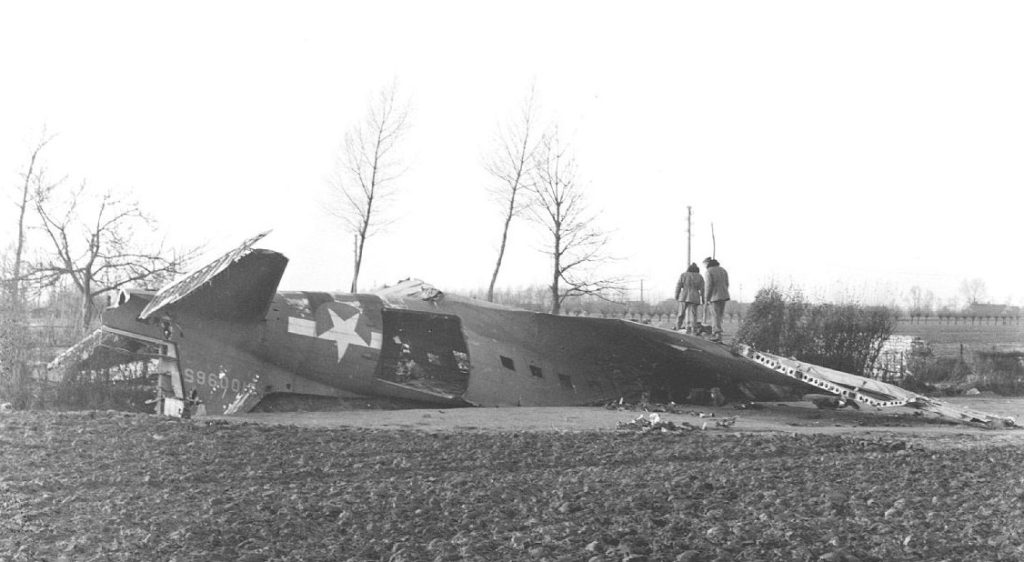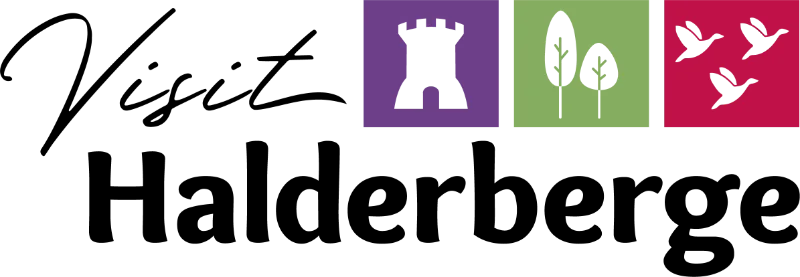From 'Threatened, Occupied, Liberated. Bosschenhoofd and Hoeven in the Second World War'
Sunday 17 September 1944 was a bright, almost summery day. In Hoeven and Bosschenhoofd, people habitually went to church in the morning. However, mass was disturbed by low-flying fighters. The tension could be felt. Around 1 p.m., the first gliders pulled by cables appeared from the west. More and more gliders came over, accompanied by hundreds of fighters. People climbed on rooftops to not miss anything from the low-flying air fleet. Those who tried to count the planes could not keep up. More than an hour went by. It was estimated that more than two thousand gliders and fighters passed over. This was all part of Market Garden, the name for two major operations launched under Field Marshal Montgomery. Operation Market was an action to use American and British airborne forces to capture the Rhine bridge at Arnhem, the Waal bridges at Nijmegen, the bridge over the Maas at Grave and the one over the Wilhelmina Canal at Son. Operation Garden involved the British 2nd Army's offensive via a corridor from Eindhoven towards Arnhem. From England, 4,500 aircraft flew to and over the southern Netherlands that day. These were transport planes, fighters for protection and bombers with their escorts.
That the operation did not go smoothly was also noticeable in Hoeven. The left engine of an American Dakota C-47 A, taking off from Nottingham, was set on fire by German anti-aircraft fire at around 15.00 near Breda. A large hole appeared in the side of the plane. The crew was able to parachute to safety over Hoeven and Oudenbosch.
Piet Reijnders could see from the tower of the old church that the plane broke away from a group coming from the direction of Breda and flew west towards Oudenbosch. It made a big 180-degree turn to the left and, losing more and more altitude, came seemingly straight towards the centre of Hoeven village. At one point it hit the ground with its wing, whereupon the plane tipped over and remained on its back, but was otherwise in one piece. The plane crashed near the home of the J. Snepvangers-Manniën family at Achter 't Hof, where the training ground of the Hoeven sports park is now located. In the space between the floor and the belly wall of the plane was a huge amount of food, cigarettes and chocolate. It became a big party for those who got there first.

In December 1944, Howard Cannon and Frank Krebs returned to the now liberated Hoeven to look at the wreckage of their Dakota and thank the Hoeven people for hub help to stay out of the hands of the Germans
The crew consisted of six people: first pilot Lieutenant Colonel Frank Krebs, second pilot Major Howard Cannon, radio operator William Quick, crew chief and observer Sergeant Freddy Borga and navigators George Arnold and Edward Sullivan. Sullivan was injured during the crash. An attempt was made to take him to safety by horse and cart, but the SS arrested him. He was treated to his wounds at Saint Louis in Oudenbosch. He then spent another nine months in captivity. William Quick was hidden at the Kessels family farm in the Wolvenstraatje in Oudenbosch. In the evening, he was taken via shortcuts and shortcuts to the home of Frans Luijkx. Crew members Krebs, Cannon and Borga fell between Kokseweg and Koedijk. Piet Withagen promised to pick them up after dark. This happened and the three were accommodated at the marechausse barracks in Oudenbosch. Krebs and Cannon were taken in turns to the home of Frans Luijkx. Borga was given shelter with the J. van Hassel-Snepvangers family. Arnold was only discovered the other morning and sheltered with the Van Hassel family.
Howard Cannon told:
"I had not jumped before. Nevertheless, I dove down, barely able to see anything. As we drifted with the wind, German patrols started firing at us from the ground. After landing in a potato field, we stripped off our parachutes and ran for cover to a ditch, as the Germans came through the fields in our direction on bicycles. We pulled grass and bushes over us and heard the Germans poking at straw sheaves with their bayonets. After what seemed like an eternity, they left. Suddenly a Dutch farmer stood in front of us and pointed at his watch. We understood from this that he would return when it was dark. After the longest walk I ever took, the Germans would shoot without warning at anyone who was outside without a special permit, we reached a farm, where we were accommodated in a barn. Then came the Dutch 'reception committee' of all the neighbouring farmers who brought us bread, cheese and warm milk. Everyone shook hands with us warmly. It gave me a special feeling of brotherhood that I had not known before."
After some time, all rescued crew members arrived in Breda. Here they were received by the LO/LKP West-Brabant. They were housed in the warehouse of V & D and then dispersed to various addresses.

